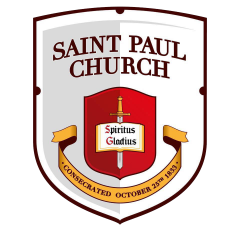
By de:Carl Emil Doepler the Elder (1824 Warszawa or Schnepfenthal – 1905 Berlin) – http://www.zeller.de/, Public Domain, https://commons.wikimedia.org/w/index.php?curid=210471
The Feast of Corpus Christi (Latin for “Body of Christ”) is the Roman Rite liturgical solemnity celebrating the reality of the body and blood of Jesus Christ, the Son of God, in the Eucharist—known as transubstantiation. Two months earlier, the Eucharist is observed on Maundy Thursday in a somber atmosphere leading to Good Friday. Corpus Christi emphasizes the joy of the Eucharist being the body and blood of Jesus Christ.
The feast is liturgically celebrated on the Thursday after Trinity Sunday or, “where the Solemnity of The Most Holy Body and Blood of Christ is not a holy day of obligation, it is assigned to the Sunday after the Most Holy Trinity as its proper day”.
At the end of Holy Mass, there is often a procession of the Blessed Sacrament, generally displayed in a monstrance. The procession is followed by Benediction of the Blessed Sacrament. A notable Eucharistic procession is that presided over by the Pope each year in Rome, where it begins at the Archbasilica of St. John Lateran and passes to the Basilica of Saint Mary Major, where it concludes with Benediction of the Blessed Sacrament.
The celebration of the feast was suppressed in Protestant churches during the Reformation, because they do not hold to the teachings of transubstantiation. Depending on the denomination, Protestant churches instead believe in differing views concerning the presence of Christ in the Eucharist, or that Christ is symbolically or metaphorically part of the eucharist. Today, most Protestant denominations do not recognize the feast. The Church of England abolished it in 1548 as the English Reformation progressed, but later reintroduced it.
